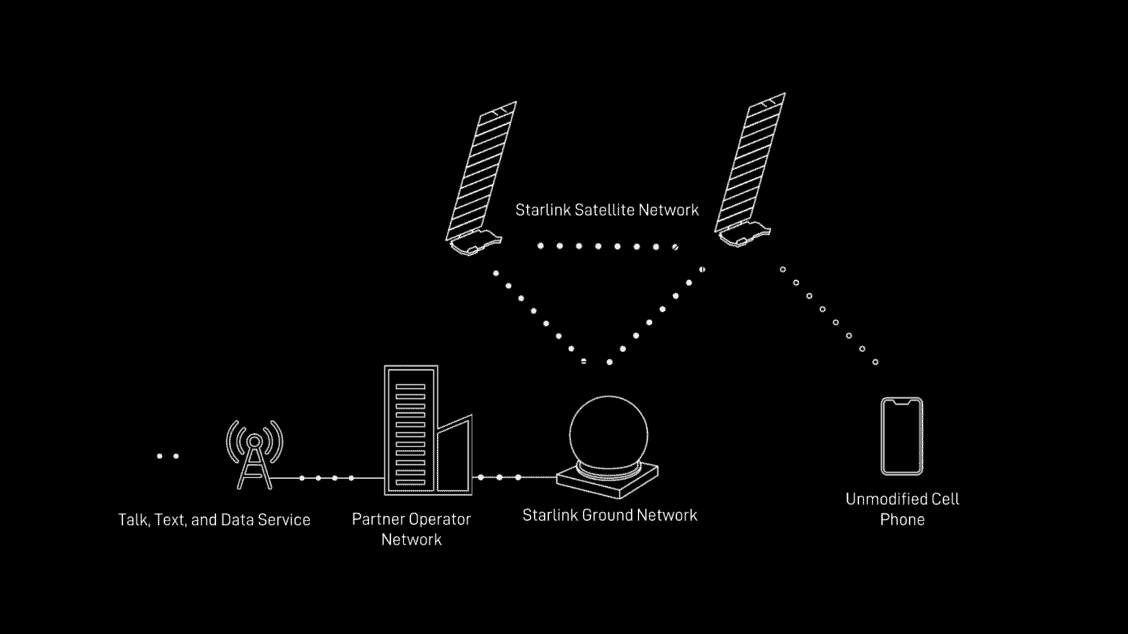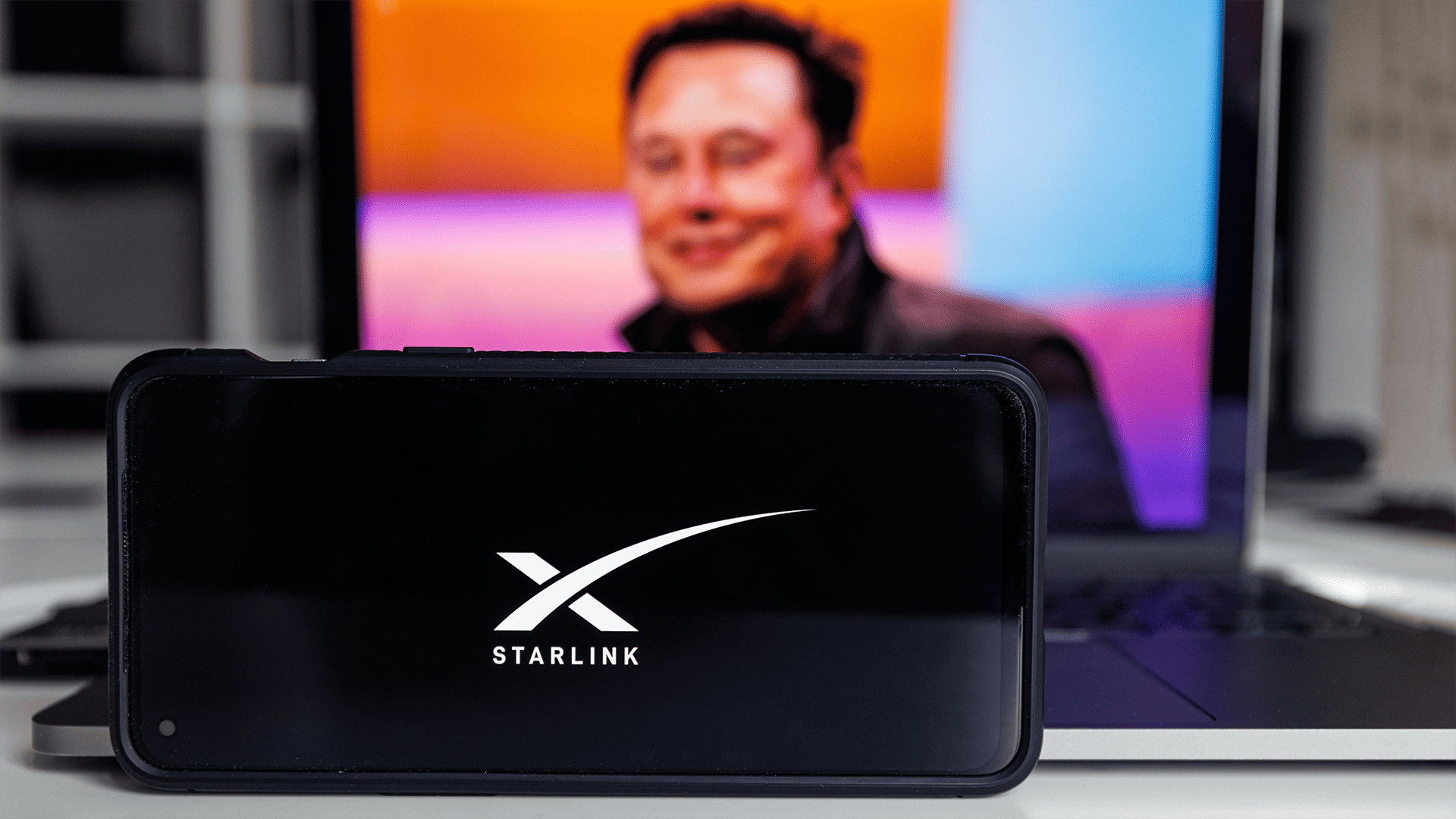SpaceX Signals a New Era in Satellite Technology With Cellular Starlink Launch
Starlink has already begun the testing phase, with its first cell signal arriving successfully on Jan. 8.

- SpaceX’s Starlink has introduced groundbreaking direct-to-cell satellite internet connectivity, potentially revolutionizing cellular internet access by offering users a direct link to its satellite constellation, particularly benefiting areas with limited or unreliable connectivity.
- Starlink’s partnership with T-Mobile signifies a collaborative effort to bring seamless high-speed satellite internet connectivity directly to T-Mobile phones, with the first available features expected in 2024 and voice and data services anticipated by 2025.
- The Federal Communications Commission’s approval of SpaceX’s “experimental special temporary authorization” is a crucial milestone, allowing Starlink to test its Starlink Direct to Cell technology.
Founded by Elon Musk in 2002, SpaceX initially made waves in space exploration and transportation, but has since evolved into internet innovation with the introduction of Starlink. Launched in 2018, Starlink set an ambitious goal to deploy a vast constellation of low Earth orbit (LEO) satellites to provide global high-speed internet coverage, particularly targeting underserved and remote areas. The constellation’s low latency and high bandwidth capabilities set it apart from traditional internet systems, promising a significant leap forward in global connectivity.
Starlink’s recent milestone involves its collaboration with T-Mobile and the introduction of Starlink Direct to Cell. The development marks a strategic move to provide direct-to-cell satellite internet connectivity, with the Federal Communications Commission (FCC) approving testing on mobile phones. We’ve researched everything you need to know about Starlink Direct to Cell service to keep you up to date on the new venture into widespread broadband availability.
The Direct-to-Cell Satellite Internet Concept

SpaceX’s Starlink has introduced a groundbreaking innovation with its direct-to-cell satellite internet connectivity. By launching satellites that integrate seamlessly with mobile phones, Starlink offers users a direct link to its satellite constellation, bypassing traditional networks. That approach could revolutionize cellular internet access, particularly in areas with limited or unreliable connectivity. The direct-to-cell innovation enhances internet speed and reliability and holds promise for bridging the digital divide in underserved regions that traditional infrastructure struggles to reach.
The impact of Starlink’s direct-to-cell technology on the cellular landscape is multifaceted. It could offer an alternative solution for users in rural and remote areas, providing them with high-speed internet access previously unavailable through conventional cellular networks. That innovation may also challenge traditional telecom providers by offering a more robust and versatile connectivity option. It has the potential to spur increased competition and innovation in the cellular industry as other providers may explore similar satellite-based solutions to improve their services. As a result, Starlink’s direct-to-cell advancements could usher in a new era of connectivity, influencing how we perceive and use cellular networks in the coming years.
A Collaborative Effort Between Starlink and T-Mobile
To deliver the revolutionary technology to consumers, Starlink has partnered with T-Mobile, a leading telecommunications provider. The collaboration intends to bring seamless high-speed satellite internet connectivity directly to T-Mobile phones, leveraging the capabilities of Starlink’s satellite constellation. The collaboration with a major mobile carrier like T-Mobile allows Starlink to integrate its innovative technology into existing cellular networks, potentially reaching a broader user base and offering enhanced internet services.
SpaceX recently launched the first batch of Starlink satellites designed for seamless integration with T-Mobile phones. The satellites are equipped with features designed to work specifically with T-Mobile’s network. The integration is expected to enable a more direct and efficient connection between the Starlink satellite constellation and T-Mobile phones, ultimately improving the internet experience for users. As the service rolls out, the first available feature, expected to become available in 2024, will allow text messaging communication only. By 2025, voice and data services are expected to roll out.
Starlink Direct to Cell Receives FCC Approval to Test Technology
The FCC plays a pivotal role in shaping the landscape of internet connectivity, including regulatory oversight over innovative initiatives such as Starlink Direct to Cell. For SpaceX’s Starlink project to take its next steps toward launching cellular services, FCC approval is a critical milestone.
The FCC sets regulations to ensure that new technologies comply with established standards, safeguarding the interests of consumers and promoting fair competition in the telecommunications industry. FCC approval provides a level of assurance to consumers and industry stakeholders, signifying that the technology has undergone rigorous scrutiny and meets the requirements for implementation. The FCC’s role is also significant in addressing potential spectrum-management issues. Since Starlink Direct to Cell involves satellite connectivity, the FCC’s oversight ensures that the spectrum resources used by the technology are allocated appropriately, minimizing interference with other wireless services.
The FCC has recently granted SpaceX an experimental special temporary authorization to carry out the test, where satellite connectivity will be transmitted to unmodified T-Mobile phones on the ground. Conducting the tests marks a major move in launching Cellular Starlink.
SpaceX has already begun the testing process, executing the first exchange on Jan. 8. The company shared the text exchange on iPhones, and although there are some noticeable errors, the test showed some success in sending and receiving text messages from a T-Mobile phone on Earth to one of Starlink’s satellites. The company did not share further information on the test, including speeds or latency.
The company is allotted a timeframe of 180 days, concluding June 14, to execute the pilot initiative. SpaceX wasted no time in starting its tests, with the first test beginning just six days after Starlink’s launch.
SpaceX Founder Elon Musk’s Vision for Global Connectivity

The launch of Starlink Direct to Cell represents a significant milestone in SpaceX’s overarching mission to revolutionize global internet connectivity. By venturing into direct-to-cell satellite internet services in collaboration with T-Mobile, Starlink is extending its reach and impact in providing reliable internet access, aligning with the company’s vision of bridging the digital divide.
Starlink has made significant strides in its effort to provide quality internet service to underrepresented areas, as evidenced by its recent satellite internet initiative with the Gen 3 Starlink dish. Expanding its offerings with a cell service satellite is a natural step forward for the company. Founder Elon Musk has consistently emphasized the importance of providing ubiquitous, high-speed internet access globally, and Starlink Direct to Cell is a strategic step toward realizing that vision.